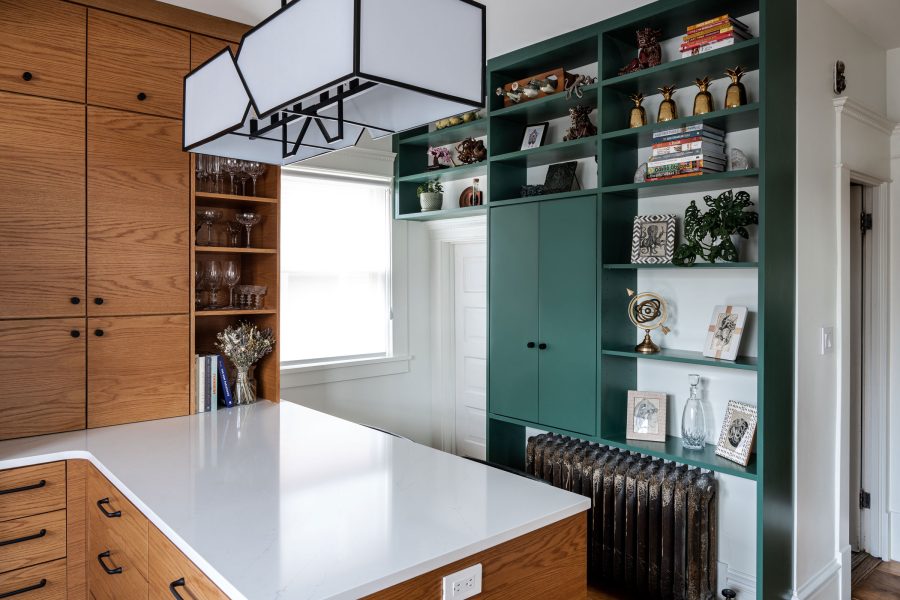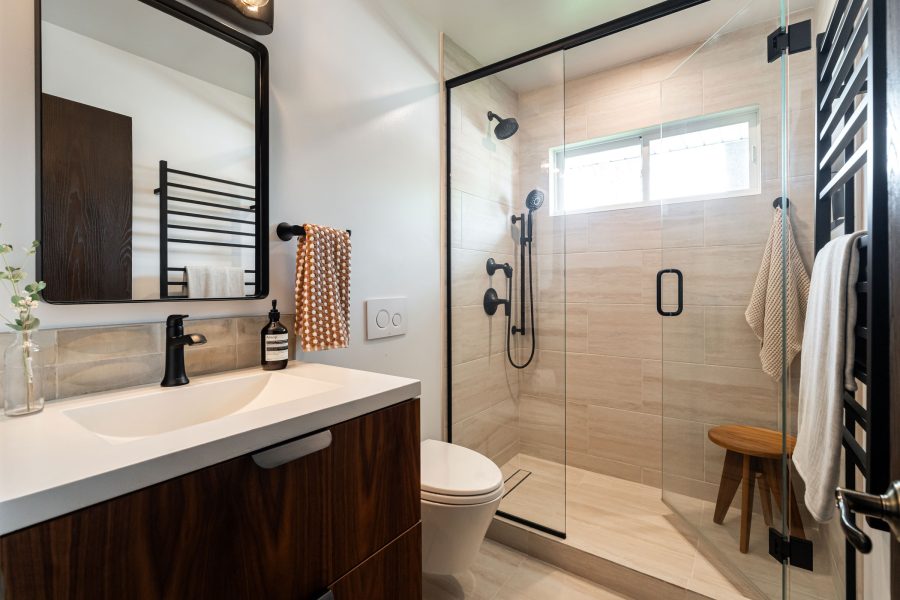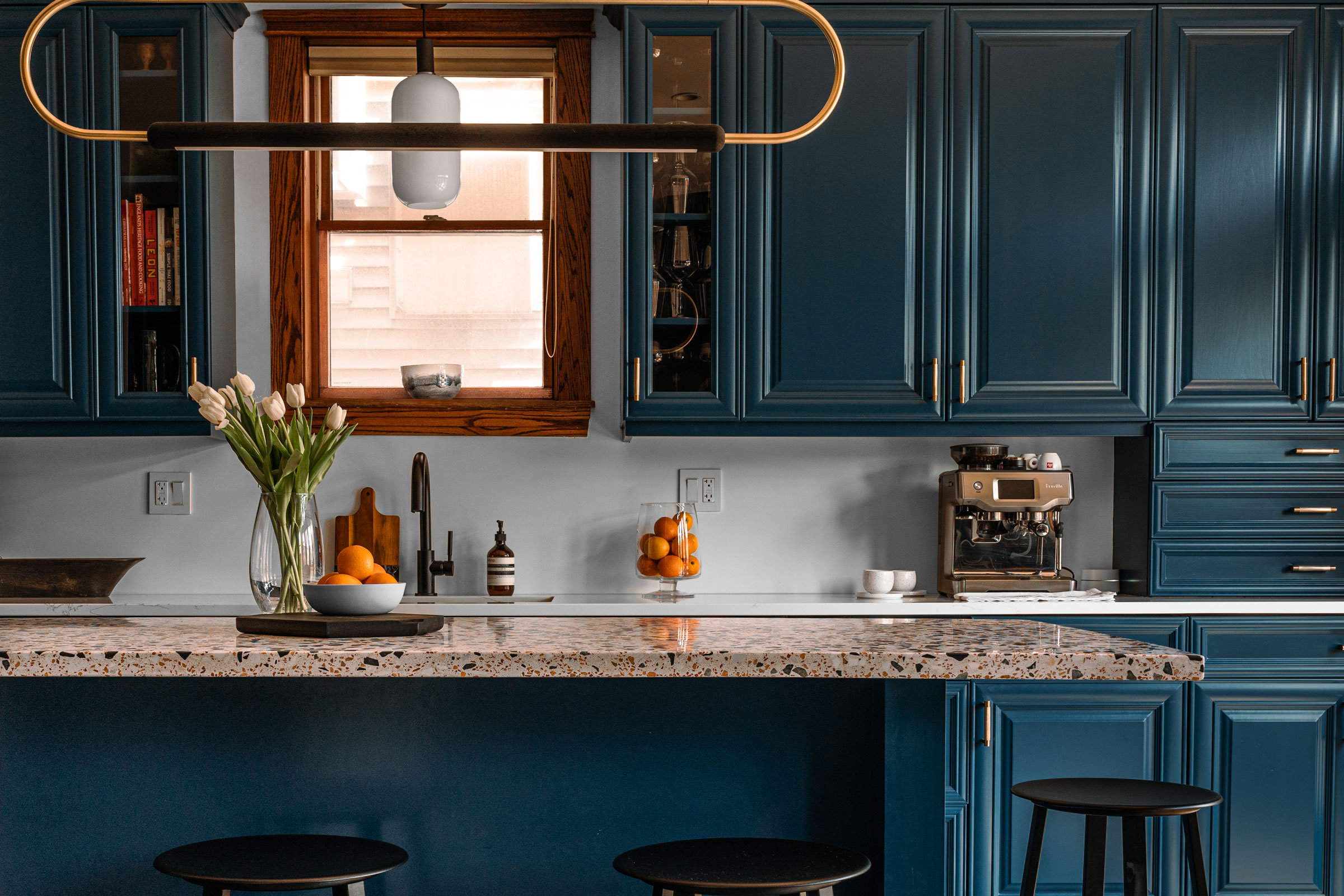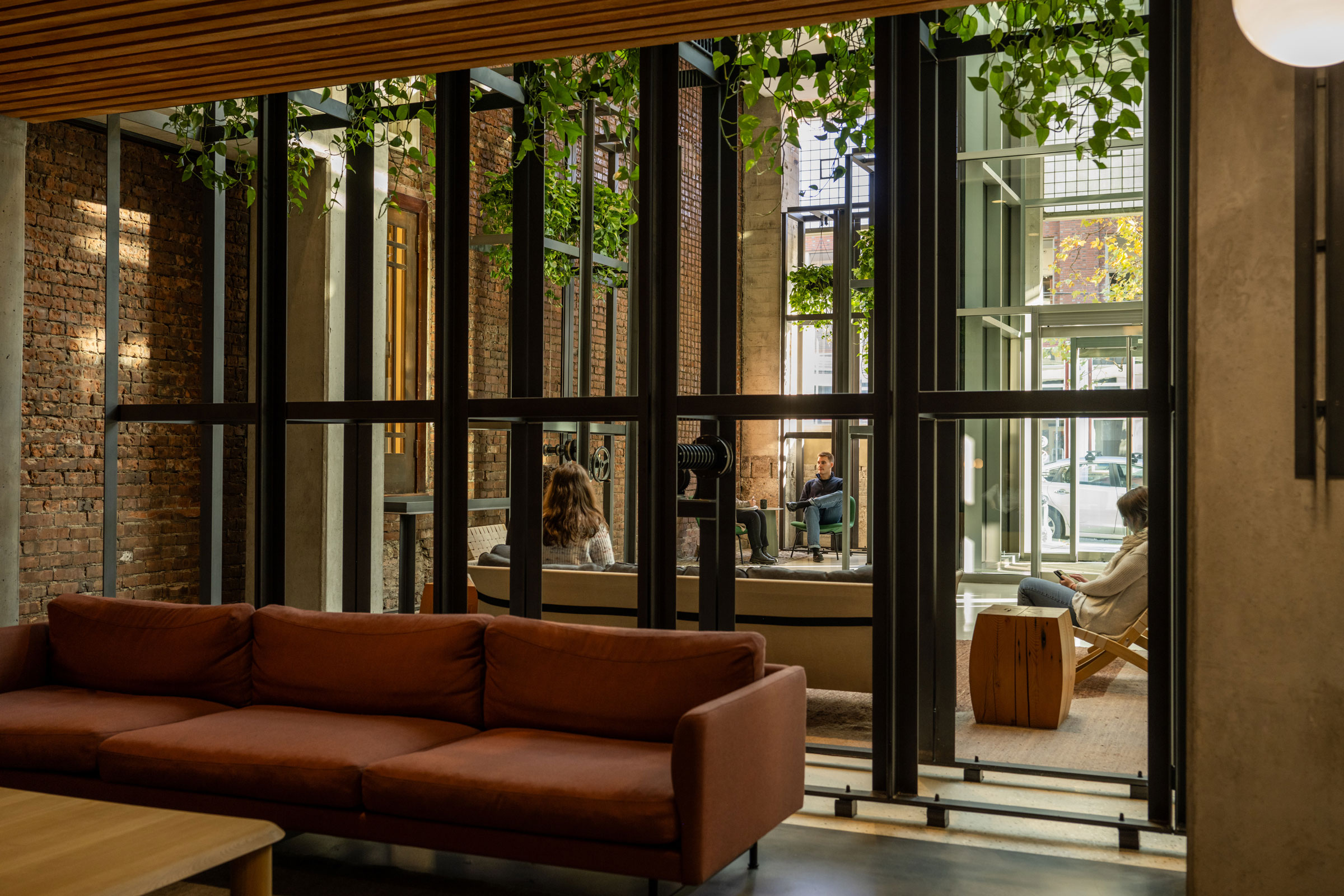Story at a glance:
- Prioritizing transparency and wellness adds up to beautiful, healthy interior spaces.
- Homeowners are starting to ask what’s in their flooring, cabinetry, or wall finishes and how those choices affect their health.
In a wellness-obsessed world fixated on food and fitness, one critical component is often omitted from the discussion—the health of the materials we use inside our buildings, the things we touch, breathe, and live with every day.
From flooring to paint, countertops to upholstery, every choice we make impacts not only the planet but also the people inhabiting a space. This is especially important in compact interiors, where exposure is more concentrated and the selection of finishes, furnishings, and fixtures requires even more deliberate decision-making.
By prioritizing product transparency and wellness for occupants, we’ve seen how the right choices can transform even the smallest of spaces into healthy, timeless sanctuaries without always requiring a luxury budget. Our clients are often surprised to learn some of the most effective changes are not only the simplest, but often far more cost effective than alternate solutions.
The Demand for Healthy Materials

Photo by Jamie Kelter Davis, courtesy of MAREDI Design
The momentum around healthy materials has been growing for more than a decade, with thought-leading institutions like the International Living Future Institute (ILFI) and the Healthy Materials Lab at Parsons School of Design pushing the conversation into the mainstream. This shift mirrors what we’ve seen in food and fashion—just as consumers now ask where their produce is grown or how their clothing is made, homeowners are beginning to ask what’s in their flooring, cabinetry, or wall finishes and how those choices may affect their health over time.
It’s a cultural awakening, and nowhere is it more pressing than in compact living environments like urban apartments, small houses, or accessory dwelling units. In these settings occupants spend the majority of their time within close proximity of every surface and product chosen for their homes. A countertop with PFAS-based coating or a paint high in volatile organic compounds isn’t just a background element; it can be a very real health hazard that can dramatically damage air quality and well-being.
Despite progress, selecting healthy materials still comes with challenges. While policies like the Inflation Reduction Act have incentivized electrification and energy efficiency, there is still little legislation directly informing, much less mandating, healthier interior materials.
Cost perceptions remain another hurdle. Many clients still assume that “sustainable” means “expensive.” In truth, while some healthier options carry a higher upfront investment, they often deliver greater value over time in durability, reduced maintenance, and fewer health risks. A mineral paint, for instance, may be costlier to apply upfront but requires far less repainting than conventional acrylic coatings, saving money and avoiding harmful chemicals down the line.
Installation can also be a barrier. Emerging materials often demand new skills from contractors. Mineral paints, bio-based flooring adhesives, or non-standard finishes require installers willing to adapt, and that learning curve can add friction to installation and construction. The solution lies in education and collaboration. Design practitioners must help both clients and tradespeople see the benefits while also building specialized networks of professionals who understand how to work with healthier products.
These challenges underscore the importance of assembling the right team and seeing education as a central part of the design process, not an afterthought.
The Benefits of Small Spaces

Photo by Alec Grefe, courtesy of MAREDI Design
Compact interiors offer a natural pathway to healthier approaches. They demand intentionality and precise planning by their very nature. With limited square footage, restraint is built into the design process and is a principle that pairs beautifully with material health.
Reducing the materials palette, for example, has immediate benefits. Instead of specifying six different tiles in a bathroom, for example, we may select two or three. This simplification not only eases chemical or ingredient tracking but also creates spaces that feel cohesive and timeless. It avoids chasing the latest trendy finish and instead allows the design to emphasize calm, durability, and long-term livability.
Compact spaces also bring several distinct advantages. With less volume to cover, design budgets can be directed toward higher-quality finishes rather than spread thin across larger areas. Simpler, more restrained palettes tend to age more gracefully, which reduces the impulse to renovate after only a few years. And because fewer materials are required overall, less waste is generated, fewer toxins are introduced, and a greater sense of efficiency is built into the project from the start.
In short, compact spaces inherently promote restraint, and restraint can be one of the most powerful tools in healthy, sustainable design.
So what actually makes for a healthy material? At MAREDI Design, a few guiding principles consistently shape our approach:
Avoiding the Red List. Products that are “Red List–free” (as defined by ILFI) hold one of the highest benchmarks for nontoxic, responsible materials.
Low- or zero-VOC. Paints, adhesives, and engineered stones with minimal volatile organic compounds drastically improve indoor air quality. Mineral and lime paints have become trusted alternatives that bring both beauty and durability.
Natural over synthetic. Whenever possible we work with fibers like cotton, linen, hemp, wool, and jute, and prefer wood-based furniture and cabinetry finished without toxic lacquers.
Steering clear of PFAS. These “forever chemicals,” often found in stain-resistant coatings and textiles (including performance fabrics, for example) have long-term health and environmental risks that make them critical to avoid.
Thinking beyond immediate cost. A durable bathroom tile or a solid wood cabinet may seem costlier initially but avoids the cycle of replacement and disposal, reducing waste and exposure over time.
The opportunity for improvement is vast but so is the responsibility. As designers and architects, our jobs are not only to specify materials but to shape awareness and shift perceptions across the industry. That role is as much about advocacy and education as it is about design.
Healthy materials may feel like a specialty niche today, but they won’t for much longer. Clients’ expectations are evolving quickly, and compact, intentional interiors have the potential to lead the way.
By choosing fewer, more transparent, and more durable materials, we can show that small spaces aren’t a compromise; they’re opportunities to model resilience, wellness, and sustainability in powerful new ways.



